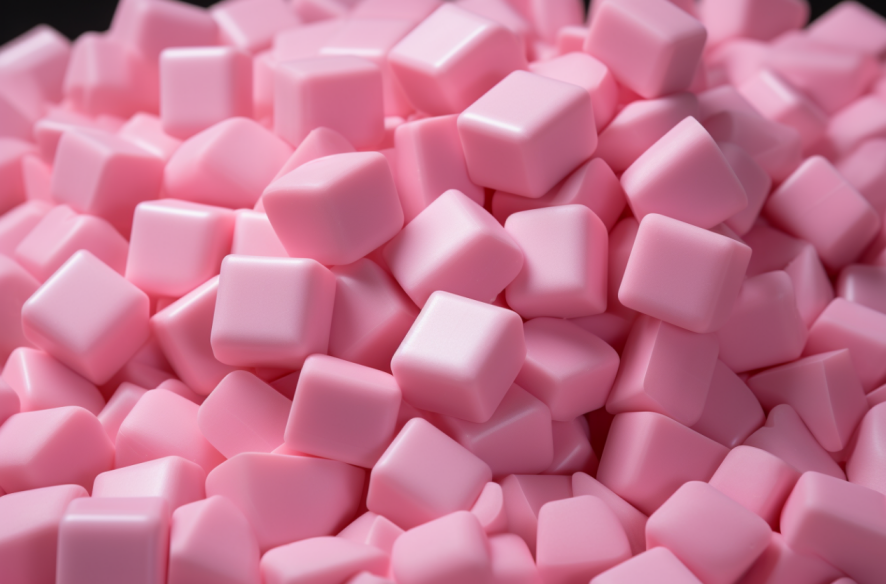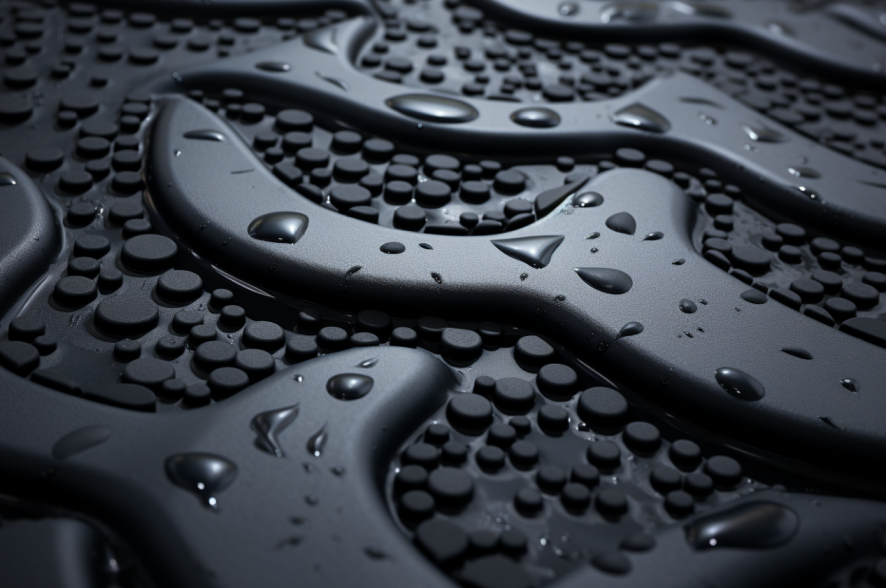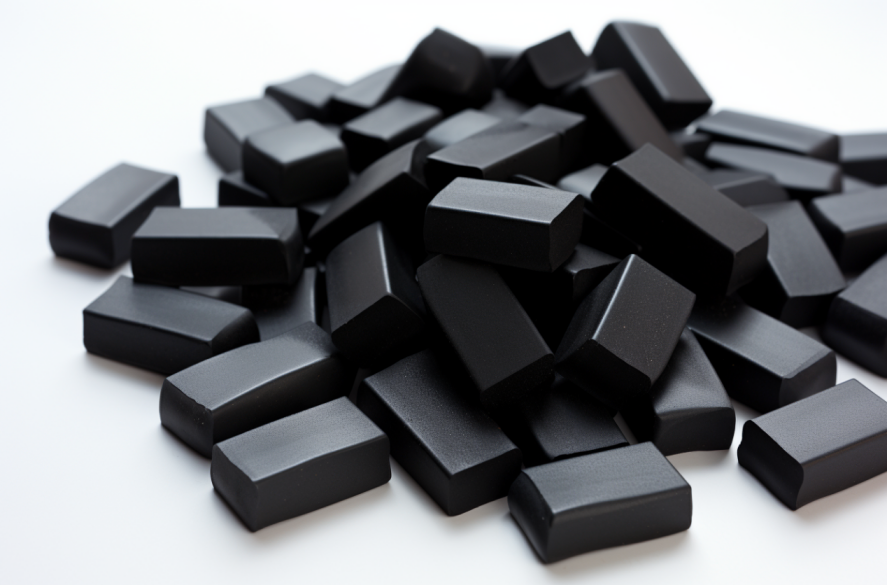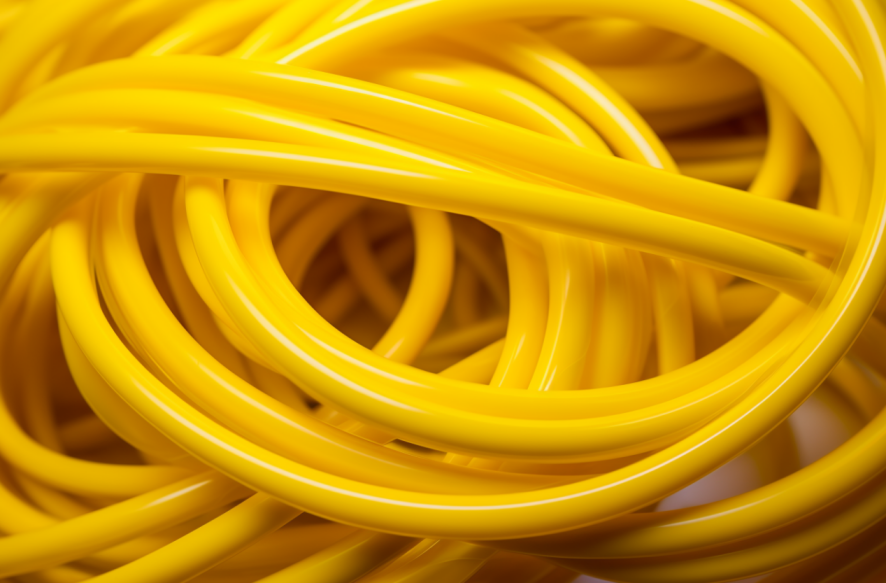BR Butadiene Rubber: Uses and Properties
20/01/2024
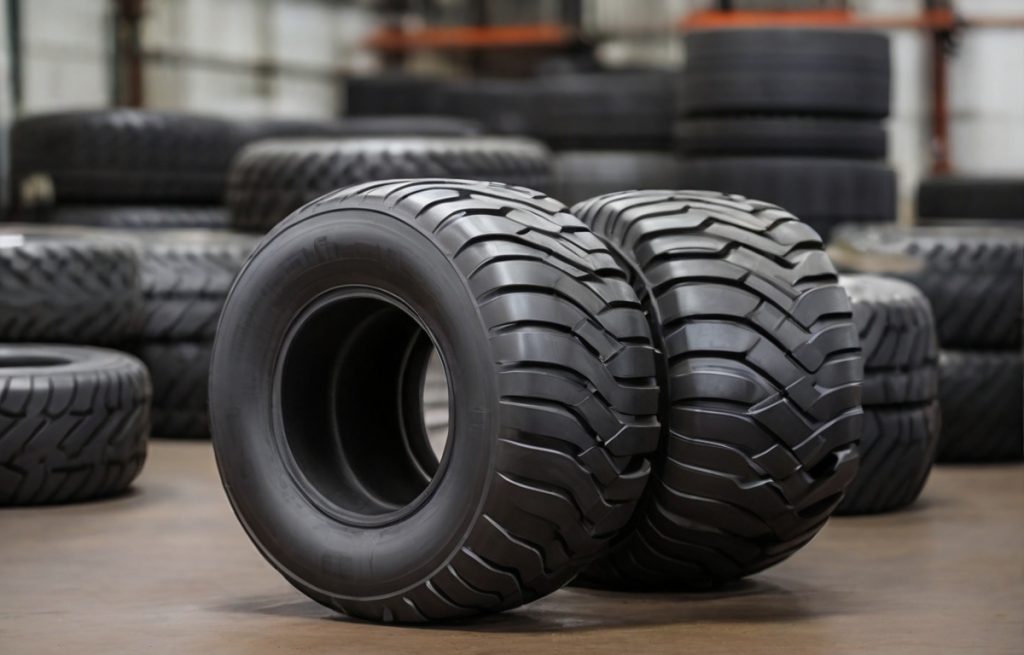
BR Butadiene Rubber is a versatile and essential synthetic rubber used in a variety of industrial applications. The unique properties of BR make it an ideal material for use in the automotive and tire manufacturing sectors. In this article, we will explore the composition and properties of BR, its importance in tire manufacturing and the automotive industry, and its broader industrial applications. We will also discuss ongoing research and advancements in the field of synthetic materials and the future prospects of BR Butadiene Rubber in various industries.
What is Butadiene Rubber?
Butadiene Rubber, commonly known as BR, is a synthetic rubber made from the polymerization of butadiene, a chemical compound derived from crude oil. BR is known for its high resilience, excellent elasticity, and superior resistance to abrasion and tearing, making it an ideal material for various industrial applications.
BR is produced by reacting butadiene with sodium, which then undergoes a series of purification and treatment processes to enhance its properties.
What sets BR apart from other synthetic rubbers is its unique molecular structure. It is formed by highly branched chains of polymer molecules, which enable it to maintain its properties even at high temperatures and under heavy stress.
BR is commonly used in tire manufacturing, particularly in high-performance tires, as it provides superior grip and traction. Its unique properties also make it an ideal material for various automotive and industrial applications, including seals, gaskets, hoses, belts, and vibration dampers. BR is also used in footwear, adhesives, and coatings.
BR in Tire Manufacturing
BR (Butadiene Rubber) plays a vital role in tire manufacturing, particularly in improving the tire’s performance, durability, and safety.
One of the key benefits of BR is its ability to enhance the tire’s tread performance by improving its grip, traction, and rolling resistance. This results in better vehicle handling, decreased wear and tear, and increased fuel efficiency, making it a popular choice for tire manufacturers.
BR also helps in achieving better wet grip and improved braking performance, making it an essential component in tire production. Its high elasticity and resilience are especially beneficial in improving the tire’s overall strength and durability, allowing it to better withstand sudden impacts and punctures.
Benefits of BR in Tire Manufacturing
| Benefits | Description |
|---|---|
| Improved tread performance | Enhanced grip, traction, and rolling resistance result in better handling, decreased wear and tear, and increased fuel efficiency. |
| Better wet grip and braking | Improved safety performance in wet conditions and better braking performance. |
| Increased strength and durability | High elasticity and resilience improve the tire’s overall strength and toughness, allowing it to better withstand sudden impacts and punctures. |
The use of BR in tire manufacturing has revolutionized the automotive industry, improving the safety, performance, and reliability of vehicles on the road.
The demand for high-performance and durable tires continues to increase, making BR a critical component in tire production for years to come.
BR in the Automotive Industry
Butadiene Rubber (BR) has a vital role in the automotive industry. It is used in a wide variety of automotive parts to ensure the safety, performance, and reliability of vehicles. Some of the areas where BR is commonly used include:
| Automotive Part | Use of BR |
|---|---|
| Seals | BR is used in seals to provide excellent resistance to abrasion, heat, and chemicals, ensuring long-lasting durability. |
| Belts | BR is used in belts to provide excellent tensile strength, making them resistant to stretching and deformation even under heavy loads. |
| Hoses | BR is used in hoses to provide excellent flexibility and resistance to heat and chemicals, ensuring that they can withstand extreme conditions. |
| Vibration Dampers | BR is used in vibration dampers to provide excellent damping properties, reducing noise and vibrations in vehicles and improving overall ride comfort. |
The use of BR in these automotive parts ensures that they can withstand the harsh conditions of the road, improving the longevity, reliability, and safety of vehicles. With the growing demand for high-performance vehicles, the demand for high-quality BR in the automotive industry is expected to increase even further in the coming years.
BR in Industrial Applications
Butadiene Rubber (BR) has a wide range of uses outside the automotive sector. Its excellent properties make it an essential component for various industrial applications, providing enhanced durability and performance to different materials. Let’s look at some of the most prevalent uses of BR in the industrial sector.
Footwear
BR is utilized in the manufacturing of footwear, particularly for its impact resistance, slip resistance, and abrasion resistance. It also provides protection against chemicals and extreme weather conditions, making it an ideal material for work boots and safety shoes.
Conveyor Belts
The versatility of BR makes it perfect for use in conveyor belts. Its wear resistance and elasticity enhance the durability of the belts, allowing them to withstand heavy loads and high-speed applications.
| Properties | Benefits |
|---|---|
| High tear strength | Prevents belt breakage and extends lifespan |
| Excellent resistance to abrasion and friction | Reduces wear and tear for increased longevity |
Adhesives
BR is a popular component in adhesive formulations, offering high tack and good cohesion. It is commonly used in pressure-sensitive adhesives, hot-melt adhesives, and contact adhesives.
Coatings
BR is used in coatings for its resistance to water, heat, and chemicals. It provides an excellent barrier to corrosion and resists degradation from ultraviolet radiation.
These are just a few examples of the many industrial applications of BR. Its versatility and unique properties make it an essential material for various products across different industries. As technology and research continue to drive innovation, the potential uses for BR are limitless, further solidifying its place as a critical component in the industrial sector.
Properties of BR Butadiene Rubber
BR Butadiene Rubber is a versatile synthetic rubber that offers outstanding properties, making it ideal for various applications. This section will provide an in-depth analysis of its essential properties, including its outstanding tear strength, heat resistance, abrasion resistance, and chemical stability.
BR’s exceptional tear strength is due to the polymer’s ability to form cross-links, which add substantial resistance to pulling forces. This property makes it suitable for applications where high durability and tear resistance are required, such as in industrial belting and footwear.
Heat resistance is another essential property of BR. It is highly resistant to heat and can withstand extreme temperatures without suffering significant deformations or breakages. This property makes it ideal for applications where high-temperature stability is required, such as in tire manufacturing.
Abrasion resistance is another vital characteristic of BR. It offers significant resistance to the wearing away of surfaces caused by contact friction, making it suitable for applications where high durability is necessary, such as in conveyor belts and mechanical grips.
The last critical property of BR is its chemical stability. It is highly resistant to the effects of acids, bases, and solvents, making it ideal for various chemical processes such as adhesives, coatings, and sealants. Moreover, BR is highly resistant to aging, ozone, and UV radiation, making it suitable for outdoor applications such as in construction and marine industries.
| Properties | Advantages | Applications |
|---|---|---|
| Tear Strength | High resilience and elasticity | Industrial belts, footwear |
| Heat Resistance | Stable at extreme temperatures | Tire manufacturing |
| Abrasion Resistance | Offers significant resistance to wearing | Conveyor belts, grips |
| Chemical Stability | Resistant to acids, bases, solvents aging, UV radiation | Adhesives, coatings, sealants, outdoor applications |
“BR Butadiene Rubber offers unique properties that make it a versatile material for multiple applications. Its exceptional tear strength, heat resistance, abrasion resistance, and chemical stability make it a reliable and durable solution for different industries.”
Advancements in Synthetic Materials: BR
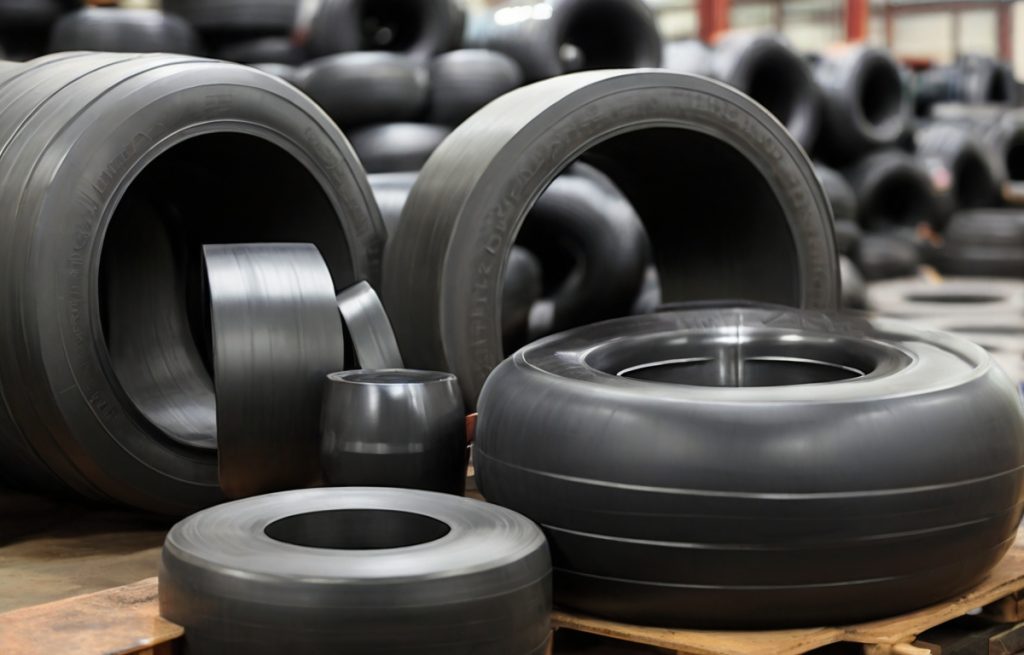
Butadiene Rubber (BR) has been in use for over a century, providing manufacturers with a highly versatile and durable material for a range of applications. Recent advancements in synthetic materials have opened up new possibilities for BR production and resulted in more sustainable manufacturing practices.
One of the significant developments in BR production has been the use of bio-based feedstocks in the polymerization process. This new approach to creating BR has the potential to reduce the environmental impact of synthetic rubber production, as it utilizes renewable resources instead of traditional fossil fuels.
In addition, researchers are exploring new methods for improving the properties of BR, such as enhancing its elasticity, wear resistance, and adhesion to other materials. These improvements are resulting in BR that is more well-suited for a broader range of applications, from consumer goods to industrial products.
Advantages of Sustainable BR Production
Using bio-based feedstocks for BR production can help reduce carbon emissions and decrease reliance on nonrenewable resources. It also offers more long-term sustainability for the synthetic rubber industry, which is expected to grow significantly over the next decade.
| Advantages of Sustainable BR Production | Disadvantages of Traditional BR Production |
|---|---|
| – Lower carbon footprint | – Dependency on non-renewable resources |
| – Reduced environmental impact | – Energy intensive process |
| – Support for green technologies | – Disposal of hazardous waste |
“The use of bio-based feedstocks for BR production is an exciting and promising development that holds substantial environmental and economic benefits.”
As sustainable practices become increasingly important in the manufacturing sector, the use of bio-based feedstocks for BR production will likely continue to grow and lead to the development of more eco-friendly and cost-effective products.
Environmental Impact of BR
As with any manufacturing process, the production of BR (Butadiene Rubber) has a significant environmental impact. The primary concerns are related to waste disposal, energy consumption, and carbon emissions.
Most of the waste generated during BR production is non-biodegradable, leading to environmental pollution. Furthermore, the manufacturing process involves the use of fossil fuels, contributing to greenhouse gas emissions and global warming.
Ongoing efforts are being made to minimize the environmental footprint of BR production. One of the ways to reduce the environmental impact is by implementing sustainable and eco-friendly manufacturing practices. For instance, the use of renewable energy sources and bio-based feedstocks can significantly reduce greenhouse gas emissions.
Additionally, the implementation of waste management strategies such as recycling, repurposing, and utilization of by-products can minimize the amount of waste generated during production, leading to a cleaner environment.
| Environmental Impact | Efforts to address |
|---|---|
| Waste Disposal | Utilization of by-products and waste management strategies |
| Energy Consumption | Use of renewable energy sources and eco-friendly feedstocks |
| Carbon Emissions | Implementation of sustainable manufacturing practices |
While addressing the environmental impact of BR production is crucial, it is equally important to focus on the ecological impact of BR usage. As BR is a non-biodegradable material, its disposal can lead to long-term environmental pollution.
Efforts are being made to recycle and repurpose BR products at the end of their life cycle, leading to a more sustainable approach to BR usage and reducing environmental pollution.
Future Prospects of BR Butadiene Rubber
The demand for BR (Butadiene Rubber) is expected to increase in the coming years, driven by emerging trends in various industries. One of the significant developments in the synthetic materials industry is the shift towards sustainable materials. The demand for eco-friendly and recyclable materials is on the rise globally, and the BR industry is actively looking for ways to minimize its environmental footprint.
Another emerging trend that is likely to shape the future of BR is the increasing demand for BR in developing economies. With the growth of the automotive and industrial sectors in countries like China, India, and Brazil, the demand for BR is expected to rise significantly in the coming years. This presents an opportunity for BR manufacturers to expand their operations to these markets.
Challenges and Opportunities
Despite the promising prospects, the BR industry is not immune to challenges. The volatility of crude oil prices, which is a key component in the production of BR, remains a significant concern. Additionally, the BR market is highly competitive, with several players competing for market share.
However, with technological advancements and increasing investments in R&D, the BR industry is well-positioned to overcome these challenges. The development of green and sustainable manufacturing processes, along with the expansion into emerging markets, presents opportunities for growth and expansion in the industry.
Conclusion
In conclusion, Butadiene Rubber (BR) is a versatile and essential material in the automotive and industrial sectors. Its unique properties, including high resilience, elasticity, and heat resistance, make it a reliable choice for a wide range of applications.
BR plays a critical role in tire manufacturing, improving tread performance, rolling resistance, and overall durability. In addition, it enhances grip, traction, and fuel efficiency, making it a vital component for the automotive industry’s safety, performance, and reliability.
BR’s versatility extends beyond the automotive industry, finding usage in footwear, conveyor belts, adhesives, and coatings, among others, to enhance material durability and performance.
The future prospects for BR are promising, with ongoing research into sustainable and eco-friendly alternatives to synthetic rubber manufacturing. Additionally, the increasing demand for BR in developing economies presents vast opportunities for the industry’s growth, although challenges such as waste disposal, energy consumption, and carbon emissions must be addressed simultaneously.
In summary, BR’s significance in the synthetic materials industry is undeniable, and its potential for future growth is promising.
FAQ
What is BR Butadiene Rubber?
BR Butadiene Rubber is a type of synthetic rubber that is made from the polymerization of butadiene, a chemical compound. It is known for its high resilience and elasticity, making it a versatile material used in various applications.
What are the uses of BR Butadiene Rubber?
BR Butadiene Rubber has numerous uses in different industries. It plays a critical role in tire manufacturing, improving tread performance, rolling resistance, and fuel efficiency. It is also used in the automotive industry for manufacturing seals, belts, hoses, and vibration dampers. Additionally, BR is utilized in industrial applications such as footwear, conveyor belts, adhesives, and coatings.
What are the properties of BR Butadiene Rubber?
BR Butadiene Rubber possesses several important properties. It has excellent tear strength, heat resistance, and abrasion resistance, making it suitable for demanding applications. It also exhibits good chemical stability and can withstand extreme weather conditions, making it ideal for outdoor use.
What is the role of BR in tire manufacturing?
BR plays a vital role in tire manufacturing. It enhances the performance and durability of tires by improving tread wear, grip, and traction. It also contributes to reducing rolling resistance, which improves fuel efficiency. BR is an essential component in tire compounds, ensuring safer and more reliable tire performance.
How is BR used in the automotive industry?
In the automotive industry, BR is used to manufacture various parts such as seals, belts, hoses, and vibration dampers. These components are crucial for ensuring the safety, performance, and reliability of vehicles. BR’s high resilience and excellent mechanical properties make it an ideal choice for automotive applications.
What are the industrial applications of BR?
BR finds extensive use in industrial applications. It is used in the production of footwear, conveyor belts, adhesives, and coatings. Its high resilience and durability make it suitable for enhancing the performance and longevity of these industrial materials.
What are the future prospects of BR Butadiene Rubber?
The future prospects of BR look promising. With the increasing demand for synthetic materials and advancements in manufacturing processes, the usage of BR is expected to grow. Furthermore, the focus on sustainability and eco-friendly alternatives in the industry presents opportunities for the development of greener BR production methods.
What is the environmental impact of BR production?
The production of BR does have environmental considerations. The waste disposal, energy consumption, and carbon emissions associated with synthetic rubber manufacturing can impact the environment. However, ongoing efforts are being made to minimize the environmental footprint of BR production through sustainable practices and innovative technologies.

